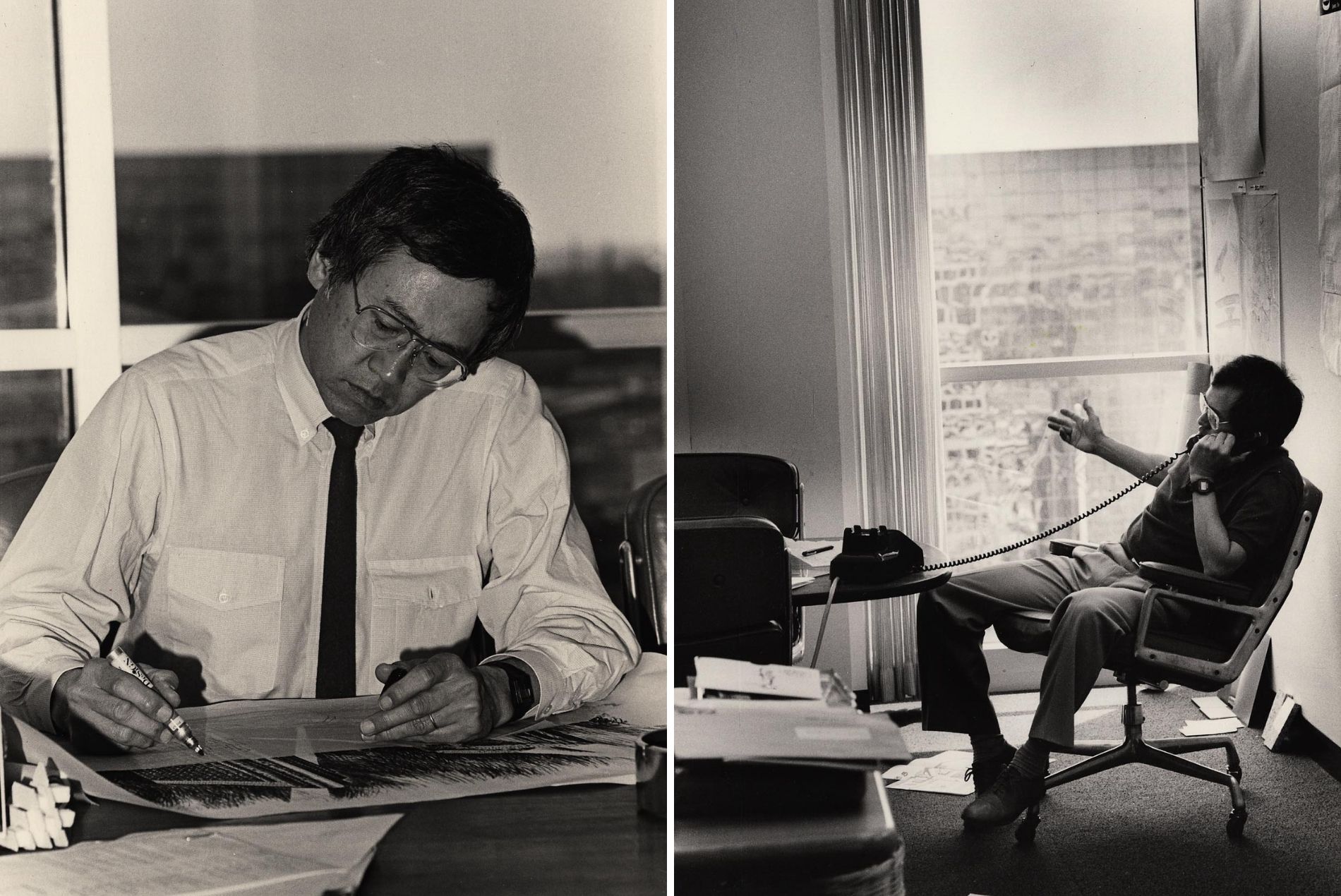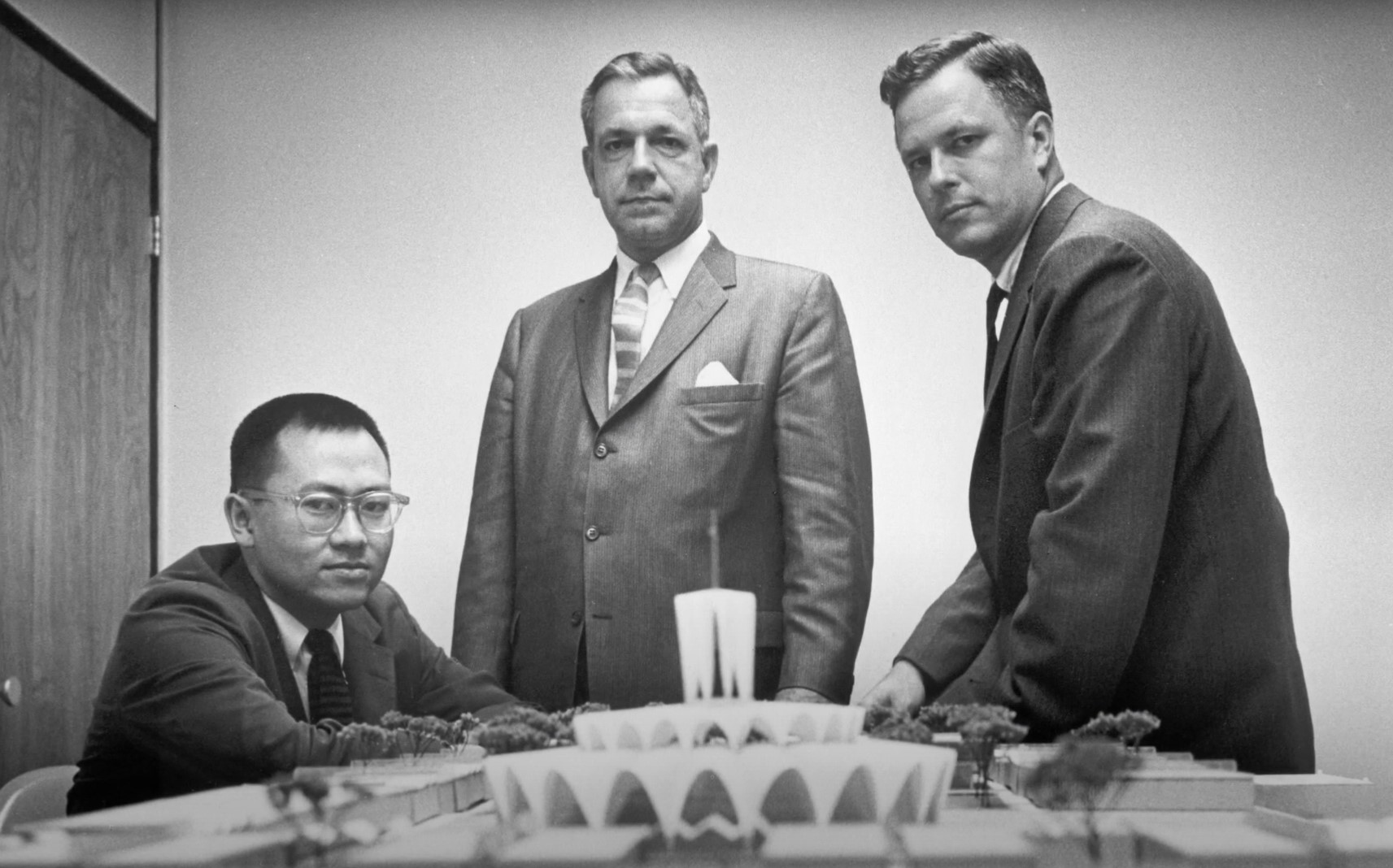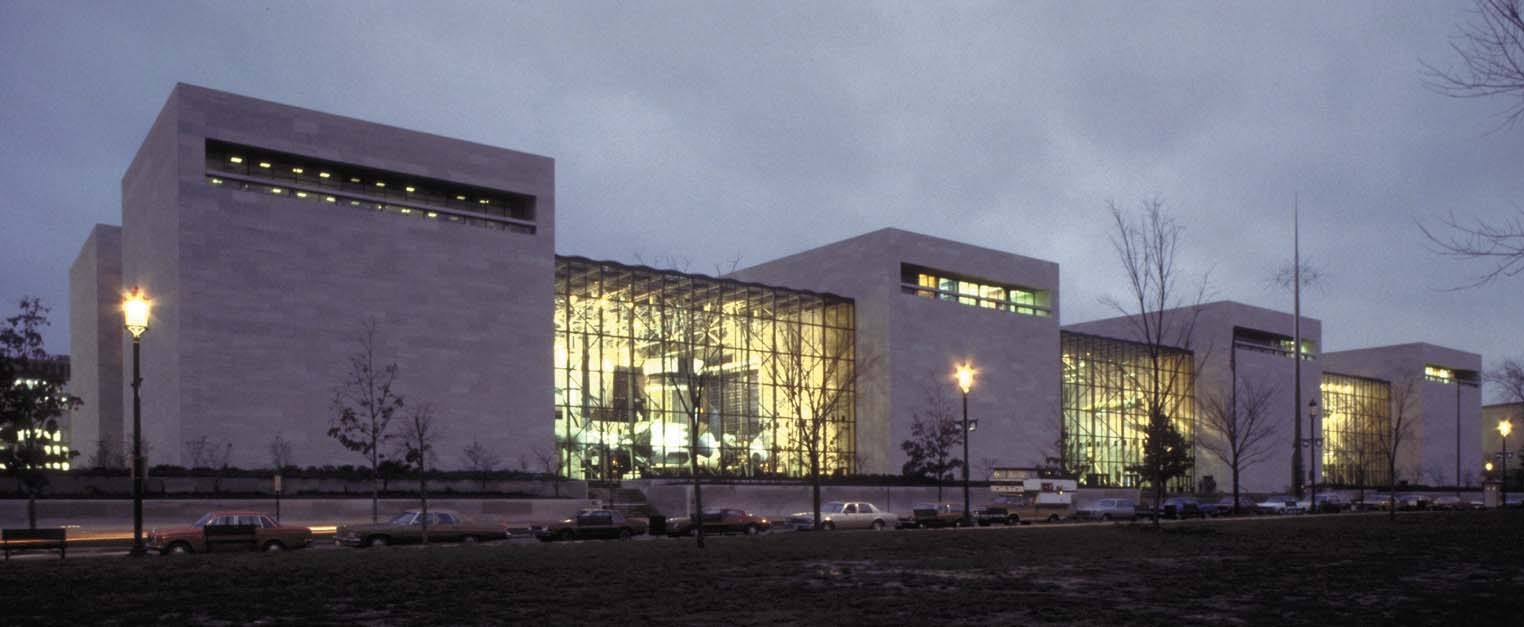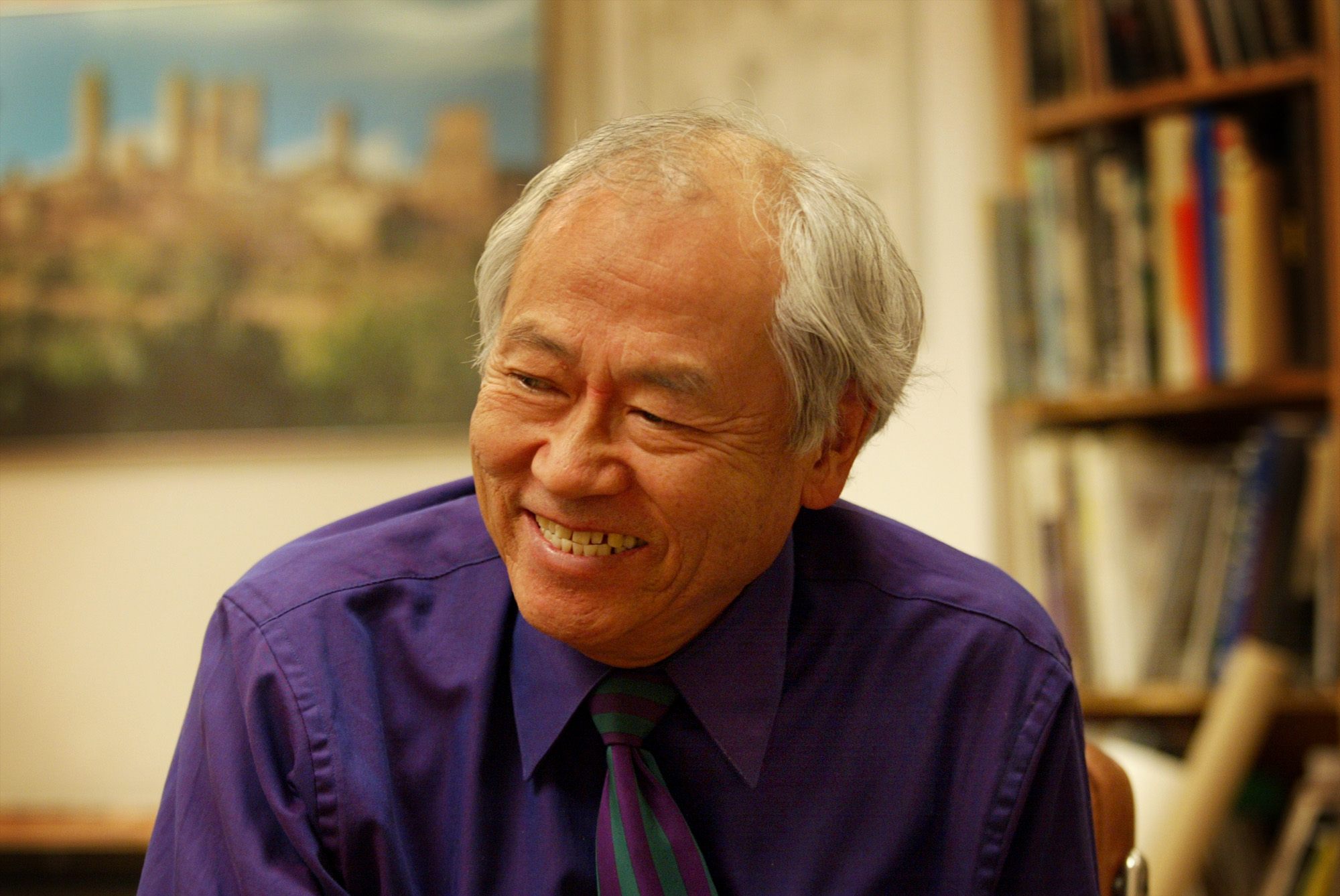Gyo Obata, FAIA, and one of the founding triumvirate of the globally renowned HOK design firm, has died at 99. He will be remembered as a design advisor in HOK’s St. Louis studio, and six decades of contribution in the design scene.
“Gyo’s extraordinary career at HOK continued into his 90s, and he served as a mentor to several generations of designers, including myself,” said HOK Chairman and CEO Bill Hellmuth, FAIA. “As an example to all of us, he led HOK to become the largest architecture-engineering firm in the United States while never abdicating his role as a designer of significant projects.”
Early Life
In 1923 Gyo was born to Chiura and Haruko Obata in San Francisco. He earned a Bachelor of Science, Architecture at Washington University in St. Louis in 1945. Then, Gyo studied under Finnish architect Eliel Saarinen, the father of Eero Saarinen, architect of the iconic Gateway Arch in St. Louis. He received a Master’s in Architecture & Urban Design at Cranbrook Academy of Art, Bloomfield Hills, Michigan the following year.
After graduation, Gyo served the U.S. Army in the Aleutian Islands off the coast of Alaska, before joining the Chicago office of architecture firm Skidmore, Owings & Merrill in 1947 as a designer.
- Photo Credits: HOK
Joining HYL
In 1951, the St. Louis architecture firm Hellmuth, Yamasaki & Leinweber (HYL) recruited him as a design assistant to Minoru Yamasaki, an architect who would later design the World Trade Centre in New York City.
The iconic passenger terminal at St. Louis Lambert International Airport, which opened in 1956, was one of Gyo’s collaborations with Yamasaki. Gyo has contributed in redefining the visual vocabulary of airports, which have become the predecessor of current airport terminals. The building has aerodynamic lines and a sequence of low-slung arches that celebrate the concept of flight.
- Photo Credits: HOK
The 32 years old Gyo was named principal of design when HYL reformed in 1955 as Hellmuth, Obata & Kassabaum (HOK). The partners pioneered a tripartite business model that would come to define the modern multidisciplinary architecture practice, along with George Hellmuth (1907-1999), who directed marketing and commercial development, and George Kassabaum (1921-1982), who handled production.
- Photo Credits: HOK
Contributions to St. Louis’ Architecture
Gyo’s earliest design work for HOK included a lot of school buildings for post-World War II’s baby booming period. The Bristol Primary School in St Louis’ suburb is an example of his project which addressed the postwar demand for classrooms, and pioneered new techniques to establish shared and collaborative learning environments.
His innovative design of the Priory Chapel at Saint Louis Abbey, which boasts an iconic circular exterior with three tiers of whitewashed, thin-shell, concrete parabolic arches, earned Gyo international recognition.
“It is an outstanding demonstration of the ingenuity of man in honouring almighty God,” said Joseph Cardinal Ritter, Archbishop of St. Louis, when the building opened. A 1962 issue of Time magazine called it, “The newest and perhaps most striking round church in the U.S.,” and Architectural Digest named the structure “one of America’s greatest hidden treasures.”
- Photo Credits: HOK
Gyo’s other projects in St. Louis included James S. McDonnell Planetarium at the St. Louis Science Center (1963); Nestlé Purina PetCare Company headquarters (1969); America’s Centre Convention Complex (1977); One Metropolitan Square (1988); The Living World at the Saint Louis Zoo (1989); Saint Louis Galleria (1991); Missouri History Museum Emerson Centre (1999); Boeing Leadership Centre (1999); Thomas F. Eagleton U.S. Courthouse (2000); Washington University School of Medicine Farrell Learning and Teaching Centre (2005); and Centene Plaza (2010).
His contributions in the region led to him being inducted to the St. Louis Walk of Fame in 1992.
Gyo’s Wider Impact
Gyo’s creative design ideas have helped to develop a growing number of key cultural and civic structures that meet utilitarian needs while also establishing memorable public places.
The National Air and Space Museum, on the National Mall in Washington, D.C., exhibited Gyo’s emphasis on structure, space, and light. Atria connected the building’s simple, colossal limestone masses, giving an efficient arena for transporting large groups of people through a variety of shows. It is one of the world’s most visited museums, having opened on July 4, 1976, as a part of America’s bicentennial celebrations.
- Photo Credits: HOK
Gyo was also instrumental in HOK’s expansion across Europe, the Middle East, and Asia. HOK’s status as a firm uniquely suited to design huge, complicated buildings anywhere in the globe was cemented by Gyo’s two famous projects in Saudi Arabia.
The concept of an international airport serving as a gateway to a city, country, and entire culture was cemented in 1983 with King Khalid International Airport in Riyadh, Saudi Arabia. Several of the airport’s organisational concepts draw inspiration from religious and secular Islamic architecture, such as the utilisation of triangle linkages.
- Photo Credits: HOK
King Saud University, which first opened its doors in 1984, has the feel of a desert citadel, with wonderful rooms to be discovered within its protected walls. The design was influenced by ideas such as ease of movement, separation of disciplines, climate effects, and the development of diffused lighting.
Awards and Achievements
The AIA’s St. Louis chapter honoured Gyo, a Fellow of the American Institute of Architects, in 2002 with the Gold Honour Award. Other honours and awards include the Japanese American National Museum’s Lifetime Achievement Award in the Arts (2004), the St. Louis Arts & Education Council’s Lifetime Achievement Award (2008), Washington University’s Dean’s Medal for the Sam Fox Awards for Distinction (2008), and the Missouri Historical Society’s Thomas Jefferson Society Award (2016).
Gyo Obata is featured in various books, including Gyo Obata: Architect | Clients | Reflections and Gyo Obata: Architect | Clients | Reflections (2010).
After his short retirement in 2012, Gyo resumed his duties as HOK’s design consultant until 2018.
- Photo Credits: HOK










